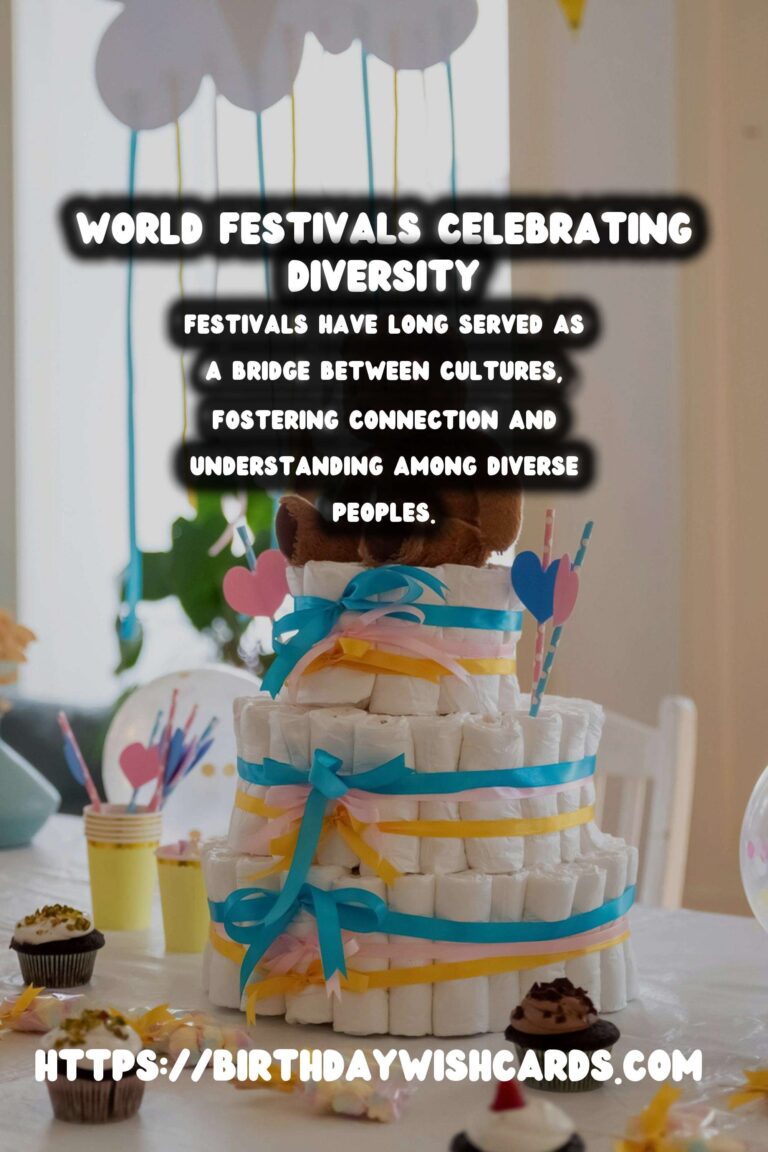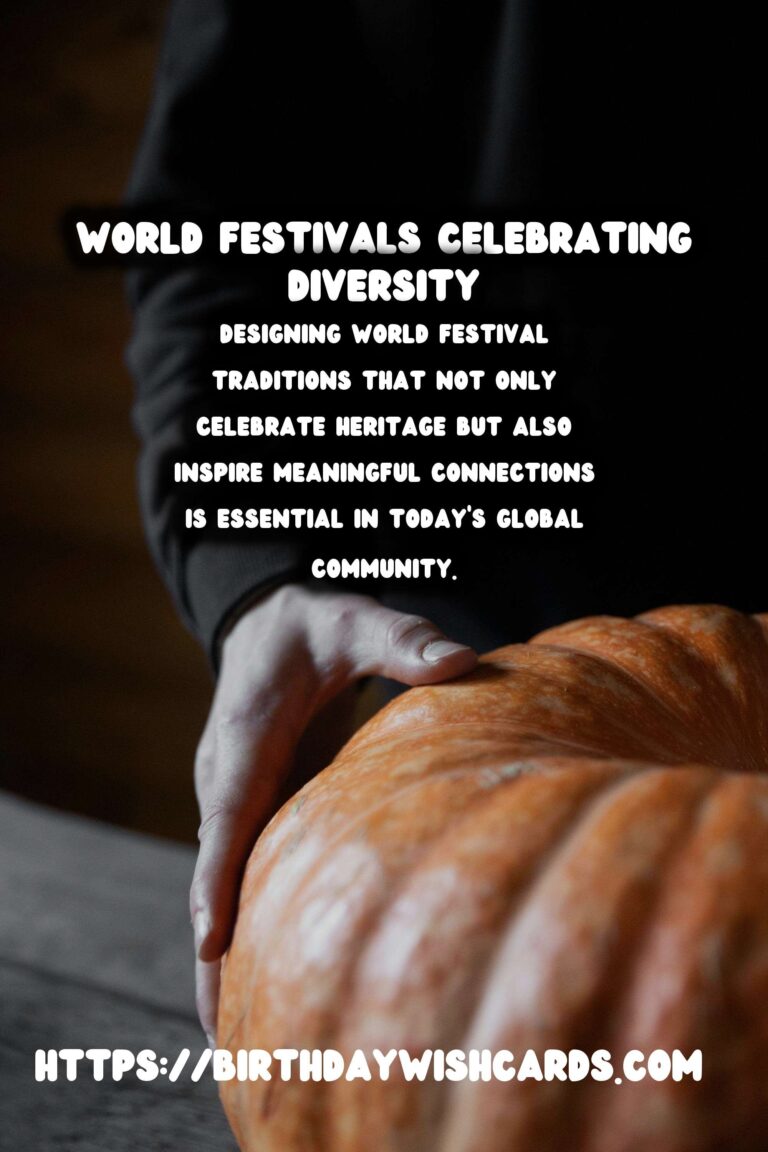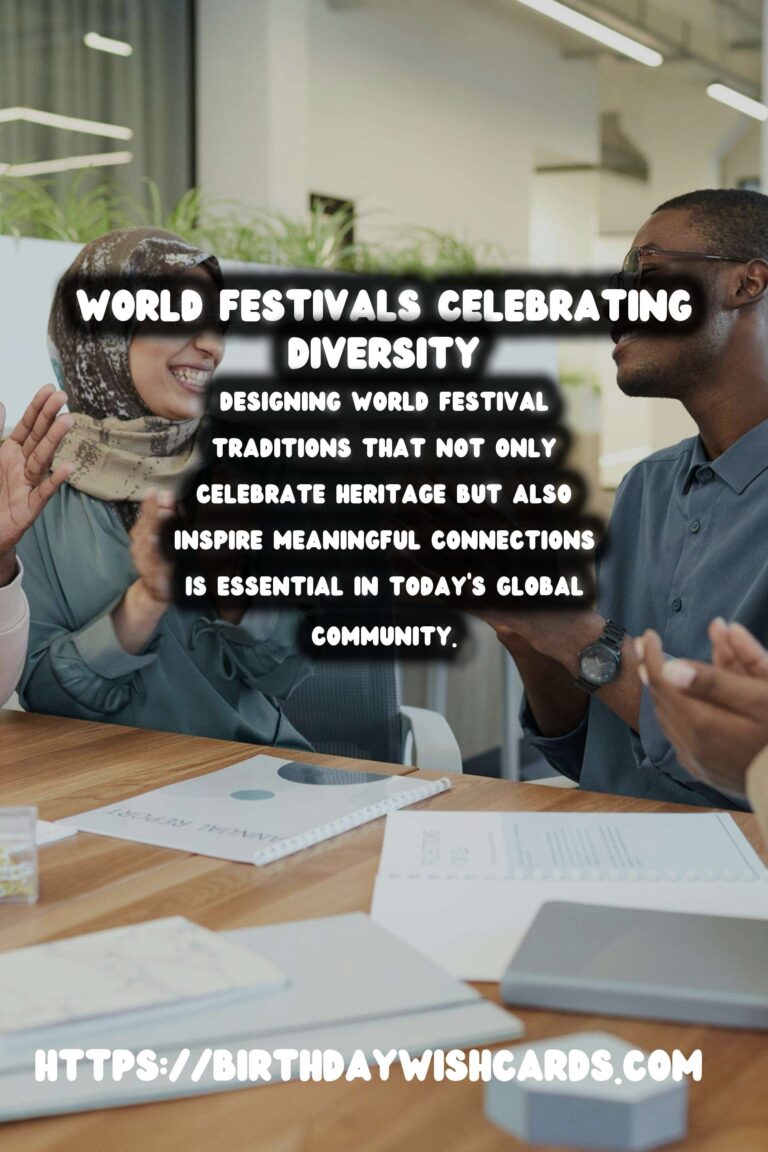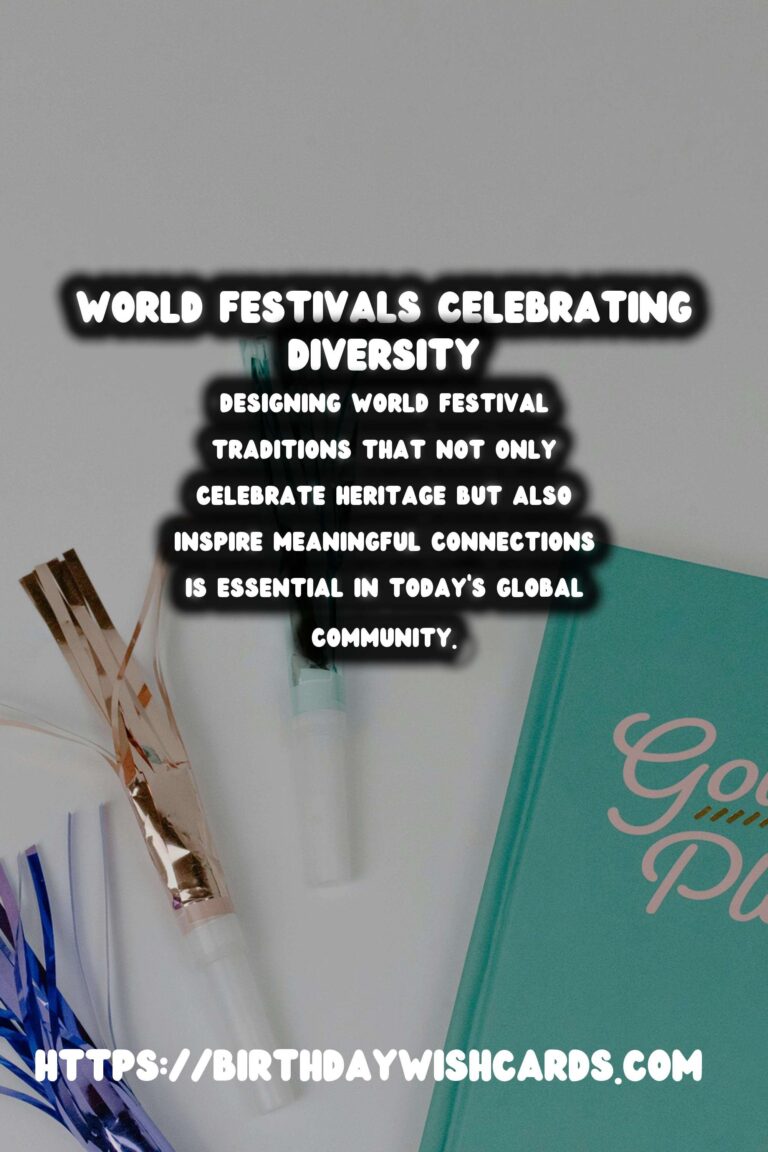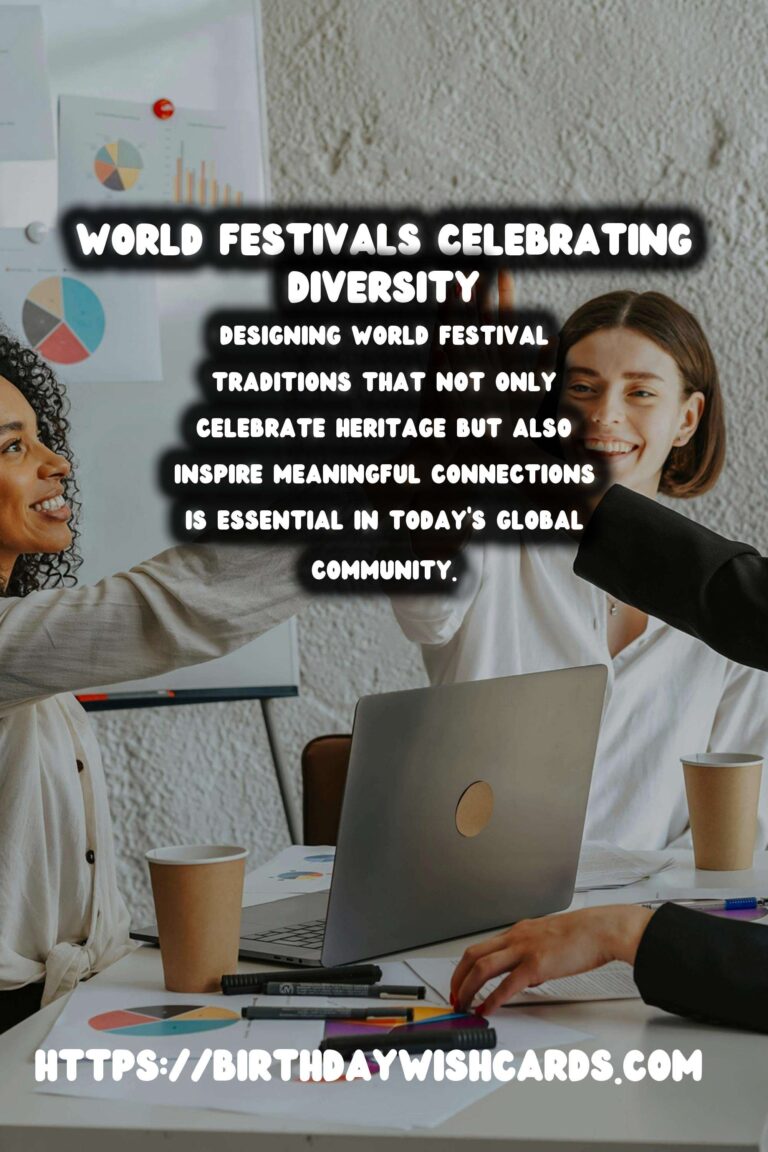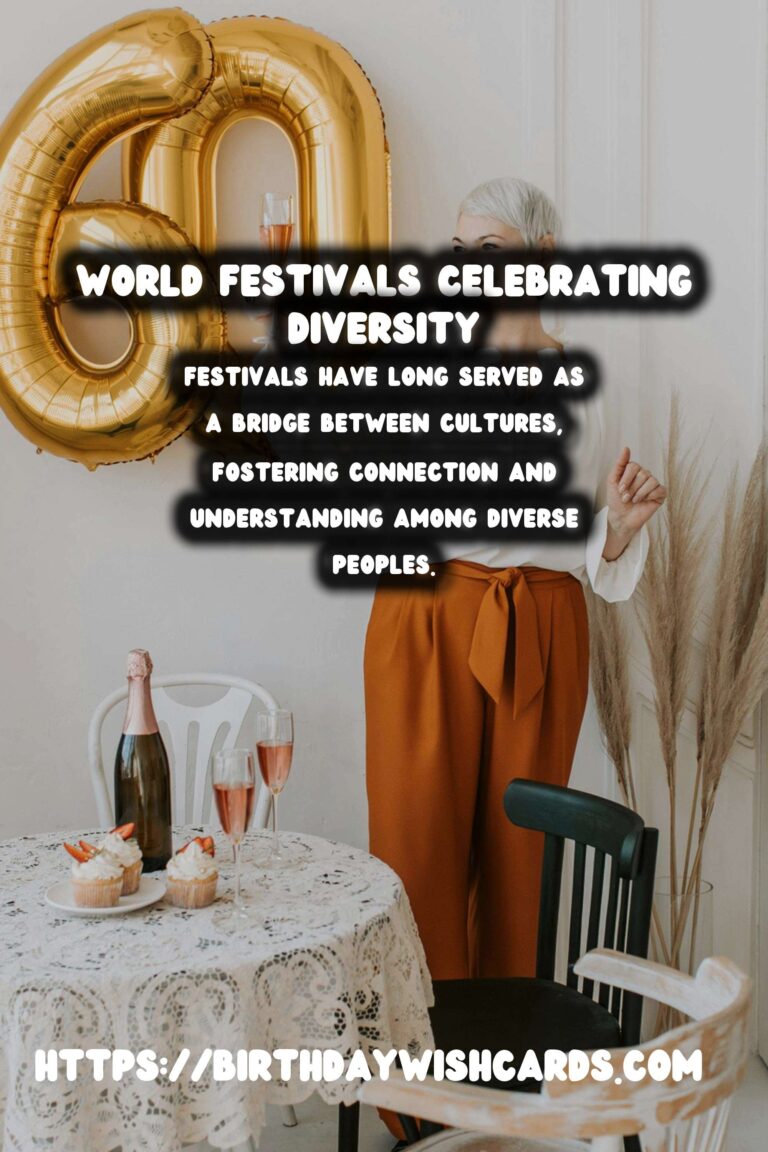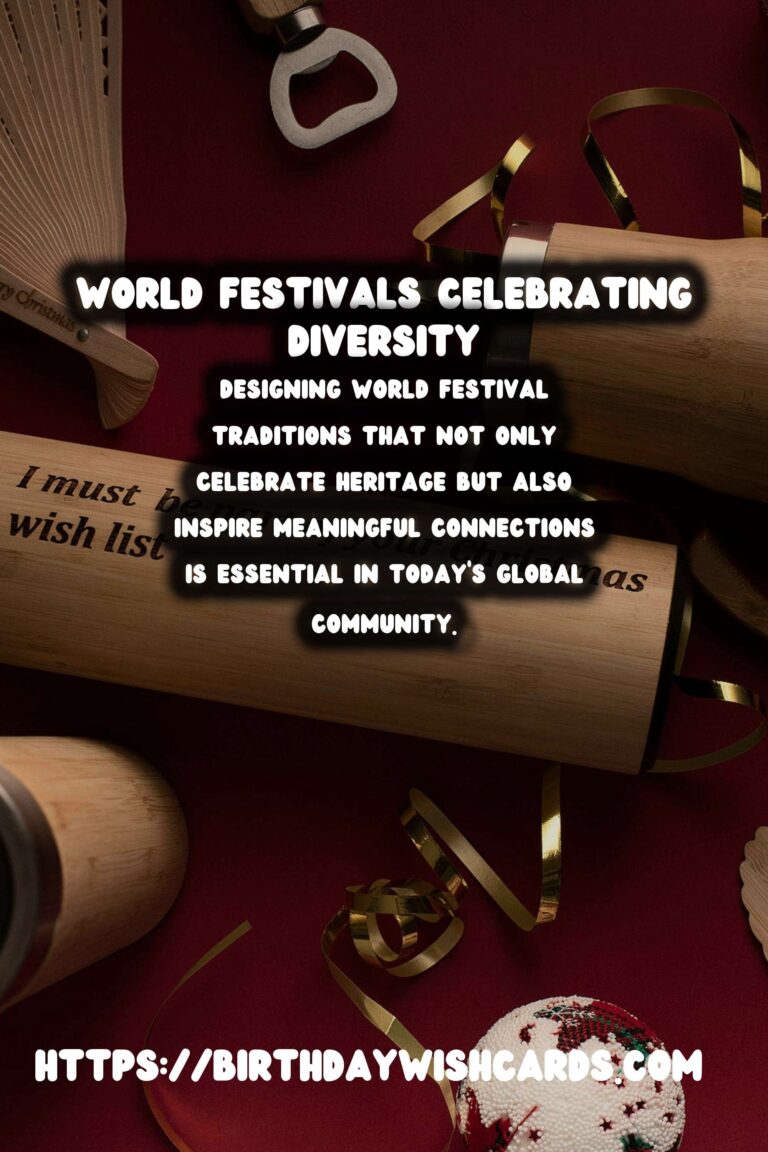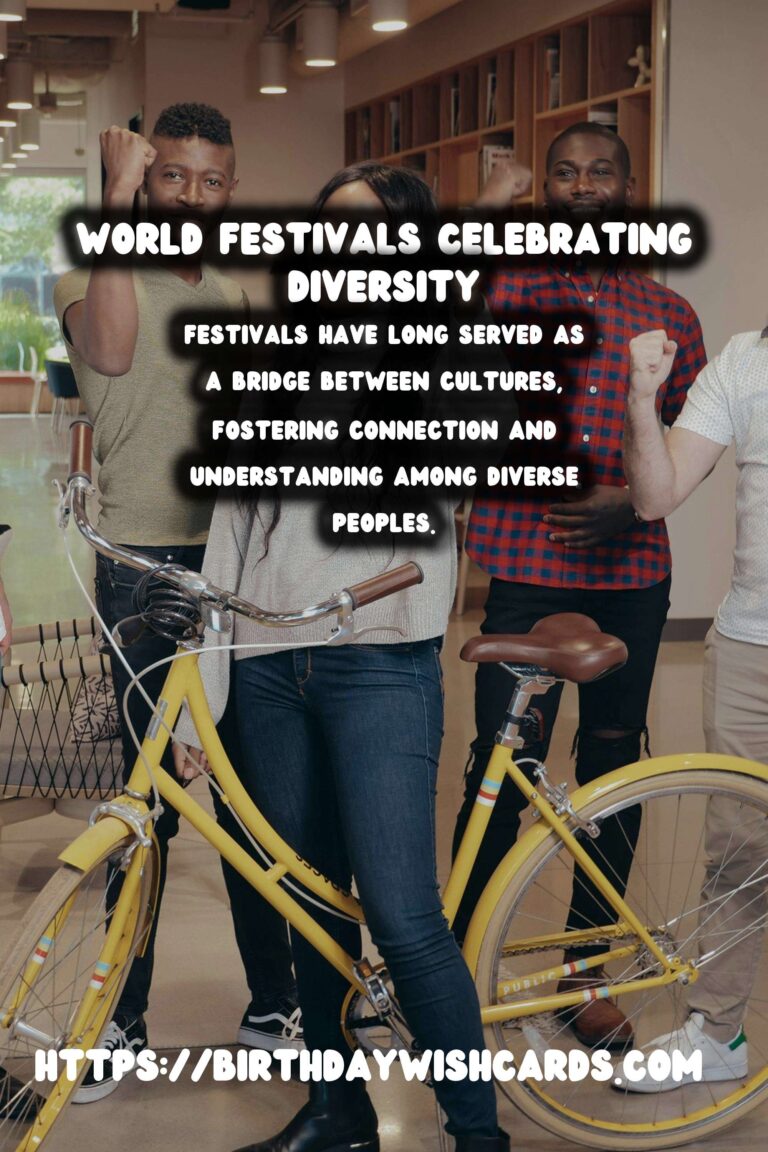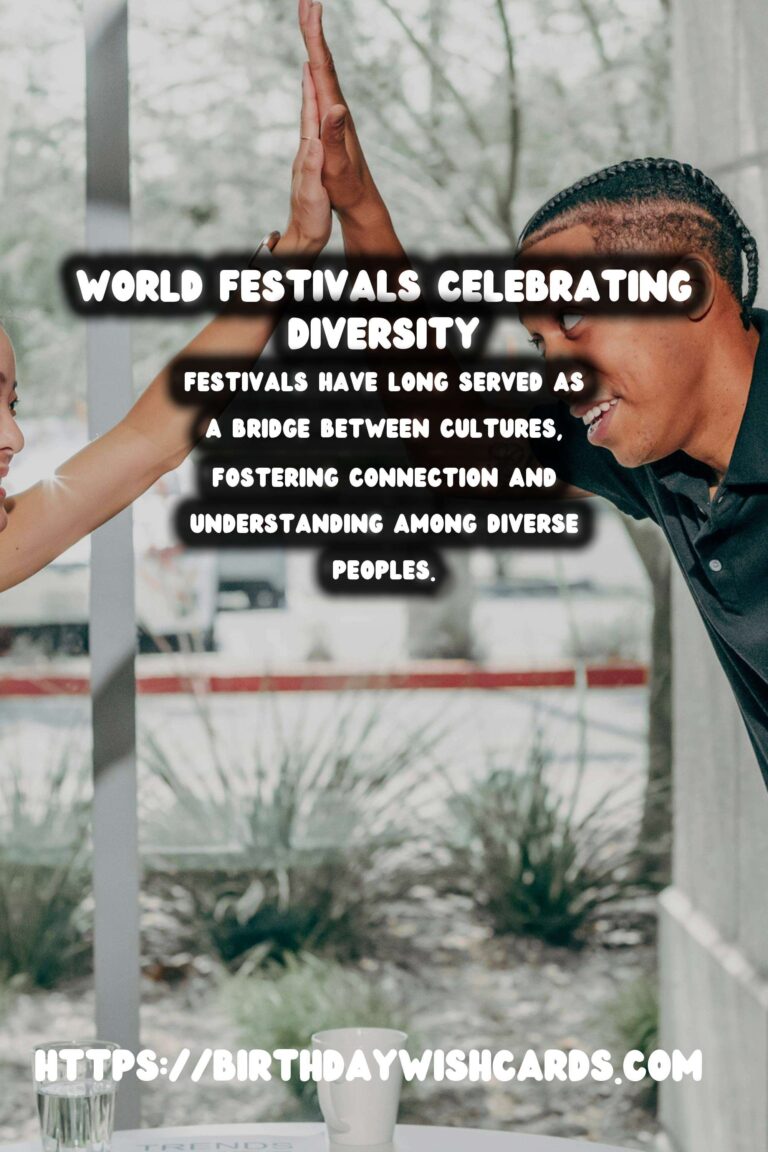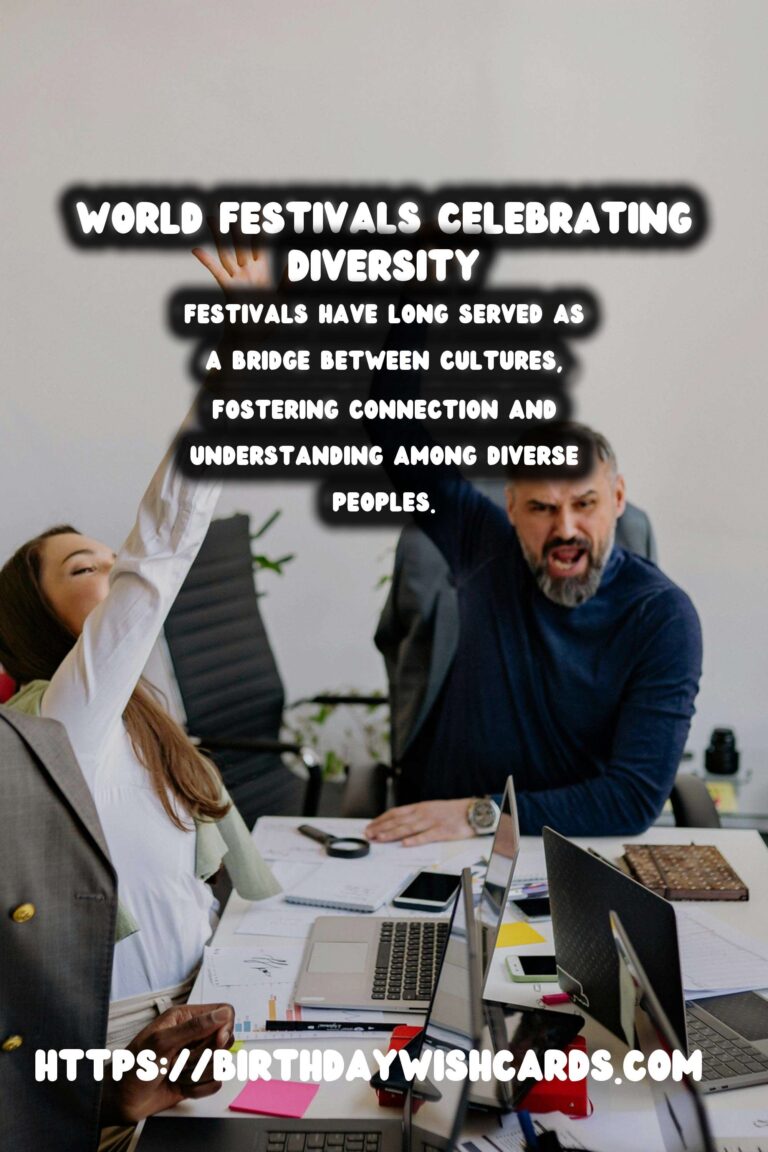
Festivals have long served as a bridge between cultures, fostering connection and understanding among diverse peoples. Designing world festival traditions that not only celebrate heritage but also inspire meaningful connections is essential in today’s global community.
Understanding the Importance of Festivals
Festivals are more than just events; they are a celebration of cultural identity, history, and community spirit. They provide a platform for sharing stories, art, and traditions, helping to build a sense of belonging.
Moreover, festivals allow individuals to engage with their heritage and can be an opportunity for people to learn about others. This exchange promotes tolerance and appreciation for diversity.
Steps to Design Inclusive Festival Traditions
1. Engage with the Community
The first step in designing a festival tradition that inspires connection is engaging with the community. This involves reaching out to local leaders, artists, and cultural groups to understand their perspectives and insights on what the festival should represent.
Involving community members in the planning process not only ensures inclusivity but also guarantees that the traditions being celebrated are relevant and meaningful to the people they represent.
2. Embrace Diversity
In a multicultural setting, it is vital to embrace diversity when creating festival traditions. This can include incorporating various artistic expressions, music, dance, and food from different cultures.
A diverse lineup of performances and activities not only enriches the festival experience but also fosters cross-cultural interactions and connections.
3. Create Interactive Experiences
To promote connection, festivals should offer interactive experiences that encourage participation. Workshops, hands-on activities, and cultural demonstrations allow attendees to actively engage with various traditions.
For example, a cooking class featuring traditional dishes from different cultures can provide a fun and immersive way for people to learn and connect.
4. Use Technology to Connect
In today’s digital age, incorporating technology can enhance the festival experience. Utilizing social media platforms to share live updates, photos, and stories can help attendees feel more connected, even if they are not physically present.
Virtual reality experiences that depict cultural practices or storytelling can also bridge the gap between cultures, enabling deeper understanding.
Examples of Successful Festival Traditions
Several festivals around the globe have successfully designed traditions that inspire connection:
1. The International Festival of Arts and Ideas
Taking place annually in New Haven, Connecticut, this festival features collaborations between artists from multiple disciplines, fostering cross-cultural dialogues through workshops and performances.
2. Diwali Festival
Celebrated by millions worldwide, Diwali not only commemorates the victory of light over darkness but serves as a time for family gatherings and community events that promote unity and joy.
3. The Edinburgh Festival Fringe
As the world’s largest arts festival, the Fringe showcases talents from around the globe, creating an incubator for cultural exchange and fostering connections through the universal language of art.
Promoting Festival Sustainability
While designing festival traditions focused on connection, sustainability must also be a priority. Implementing eco-friendly practices and encouraging responsible participation can help preserve cultural heritage and the environment.
Consider sourcing local products, minimizing waste, and promoting reusable materials as part of the festival experience. These practices will not only inspire connection but also respect the cultures being celebrated.
Evaluating Success and Community Impact
After the festival, it is crucial to evaluate its success and impact on the community. Gathering feedback from participants can provide insights into what worked and what could be improved for future iterations.
Surveys, discussions, and community forums are effective tools for assessing the festival’s outreach and effectiveness in fostering connections.
Conclusion: Designing for Connection
World festival traditions possess the power to inspire connection, understanding, and unity among diverse populations. By engaging with communities, embracing diversity, creating interactive experiences, utilizing technology, and promoting sustainability, festival planners can create lasting traditions that resonate with attendees and foster meaningful connections.
As we move forward in a globalized world, the role of festivals in bridging cultural gaps remains more important than ever. Each festival can be a small step towards a more connected, understanding, and peaceful world.
Festivals have long served as a bridge between cultures, fostering connection and understanding among diverse peoples. Designing world festival traditions that not only celebrate heritage but also inspire meaningful connections is essential in today’s global community. 
